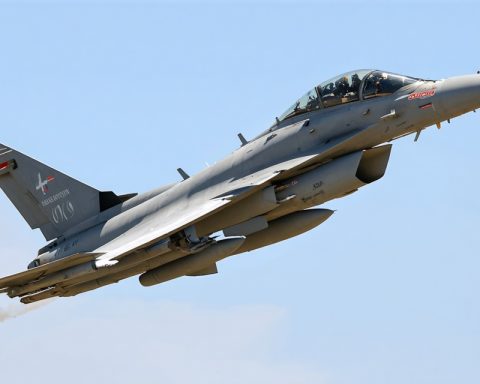Red Sea Confrontation Leads to Friendly Fire Mishap
In a stunning turn of events, two U.S. Navy pilots narrowly survived a friendly fire incident while flying over the Red Sea early Sunday. The mishap was caused by the guided-missile cruiser USS Gettysburg, which inadvertently targeted an F/A-18 fighter jet from the USS Harry S. Truman. Both pilots were rescued successfully, although one suffered minor injuries.
Investigation Underway
According to U.S. Central Command (CENTCOM) based in Tampa, Florida, this unfortunate event is under thorough investigation to prevent such incidents in the future. They confirmed that the firing was not due to hostile action.
U.S. Operations Against Houthis Continue
The friendly fire incident occurred amid intensified U.S. operations against Yemen’s Houthi rebels, who have been escalating threats in the region. These rebels, aligned with Palestinian causes in Gaza, are disrupting critical shipping lanes, forcing maritime companies to consider longer, costlier routes.
Strategic Strikes in Yemen
On the same day, CENTCOM executed precision airstrikes targeting Houthi missile storage and command centers in Sanaa, Yemen. The U.S. military also successfully intercepted several Houthi-launched drones and an anti-ship missile over the Red Sea, demonstrating the ongoing volatility in the region.
As investigations proceed, further details on the incident are anticipated to emerge, shedding light on the complexities of military engagements in such contested areas.
Friendly Fire in the Red Sea: Analyzing Implications and Future Measures
Overview of Recent Events
In a recent friendly fire mishap over the Red Sea, a guided-missile cruiser from the U.S. Navy mistakenly targeted an F/A-18 fighter jet. This incident highlights the inherent risks of military operations in high-tension zones. As the United States continues its operations against the Houthi rebels in Yemen, this misstep underscores the complexities involved in maintaining operational precision.
Investigation and Security Measures
Following the incident, CENTCOM has initiated a thorough investigation to understand the factors leading to this friendly fire accident. Preliminary findings suggest the event was not caused by hostile activity, indicating potential technical or communication issues. As part of the investigation, the U.S. Navy aims to review existing protocols and reinforce measures to prevent future incidents. For more information on U.S. Naval operations, visit the U.S. Navy.
Strategic Military Operations
Despite the mishap, U.S. military operations against the Houthi rebels remain steadfast. Recent strategic airstrikes in Yemen aimed at disabling the rebels’ missile storage and command centers indicate a heightened focus on neutralizing threats originating from the region. This is crucial as the Houthis continue to pose risks to vital shipping lanes in the Red Sea, a strategic maritime corridor.
Implications for Maritime Industries
With increased volatility in the region, maritime companies face challenging decisions regarding routing and security. The threat from Houthi rebels has made traditional shipping lanes potentially hazardous, prompting a shift towards longer, more secure routes. This adaptation comes with increased operational costs but is considered necessary to avoid potential confrontations.
Future Predictions and Military Engagement
As CENTCOM works on bolstering security measures, it’s expected that technological advancements will play a significant role in avoiding similar incidents. Enhanced tracking systems, improved communication protocols, and advanced AI-driven threat assessment tools may be pivotal in ensuring safe military operations in conflicted zones. Continuous evaluation and real-time data analysis will be essential components in shaping future military engagements.
The recent events highlight the critical balance of maintaining security while navigating political and military complexities in the region. For comprehensive updates on U.S. military strategies, visit U.S. Central Command.
Conclusion
The Red Sea incident serves as a reminder of the intricate nature of military operations in volatile regions. Through ongoing investigations and strategic enhancements, the U.S. Navy strives to prevent future miscalculations and reinforce its capabilities in protecting both military assets and commercial interests in such strategic territories. As more details emerge, stakeholders remain vigilant in adapting and ensuring the safety and efficiency of operations within and beyond the Red Sea.







